Planning & Prep Work
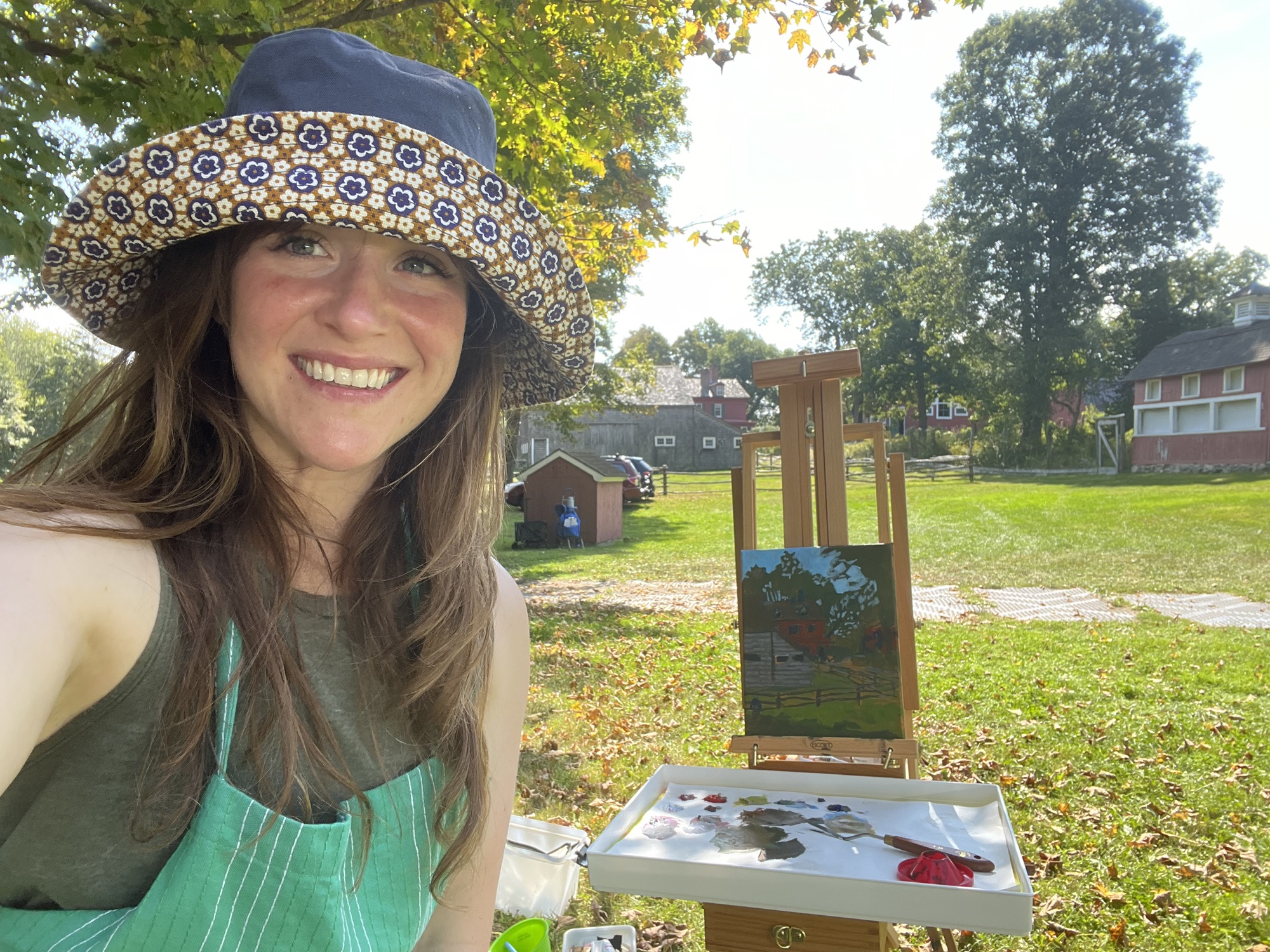
What could you do more of?
I could do more planning.
Lately I’ve been working on a couple of commissioned paintings.
I’ve been loving the work. The consistency of showing up to the easel every day, Monday through Friday, to work on a project I’ve already been paid handsomely for lends to the sort of gratification I’ve sought after for a long time. I’m working at a satisfying yet unhurried pace and creating a work I’m proud of.
Before I started these commissions, I took a moment to take inventory of my favorite paintings I’ve completed versus those that I’ve not been pleased with and have chosen to leave unfinished.
Planning Paintings
Looking back through my old sketchbooks, I noted that my favorite paintings were those that I spent a good chunk of time preparing prior to twisting open a paint tube. For my favorite paintings, I’d done at least a full sketch, studied inspiration photos to determine an underpainting plan, and started out the painting with a palette of pre-mixed paints in an already-decided color scheme.
Oil Paintings
The most recent unfinished oil painting did receive some planning. There was a sketch from the original painting plan, and when I decided to adjust the style and the canvas proportions, I did another quick sketch. Yet that sketch still left many questions unanswered—puzzles left to be figured out on the easel rather than with graphite on paper. Puzzles that let paint dry in the wrong places, thick daubs to be covered again and again by colors that didn’t correlate with textures. An unfinished painting mess.
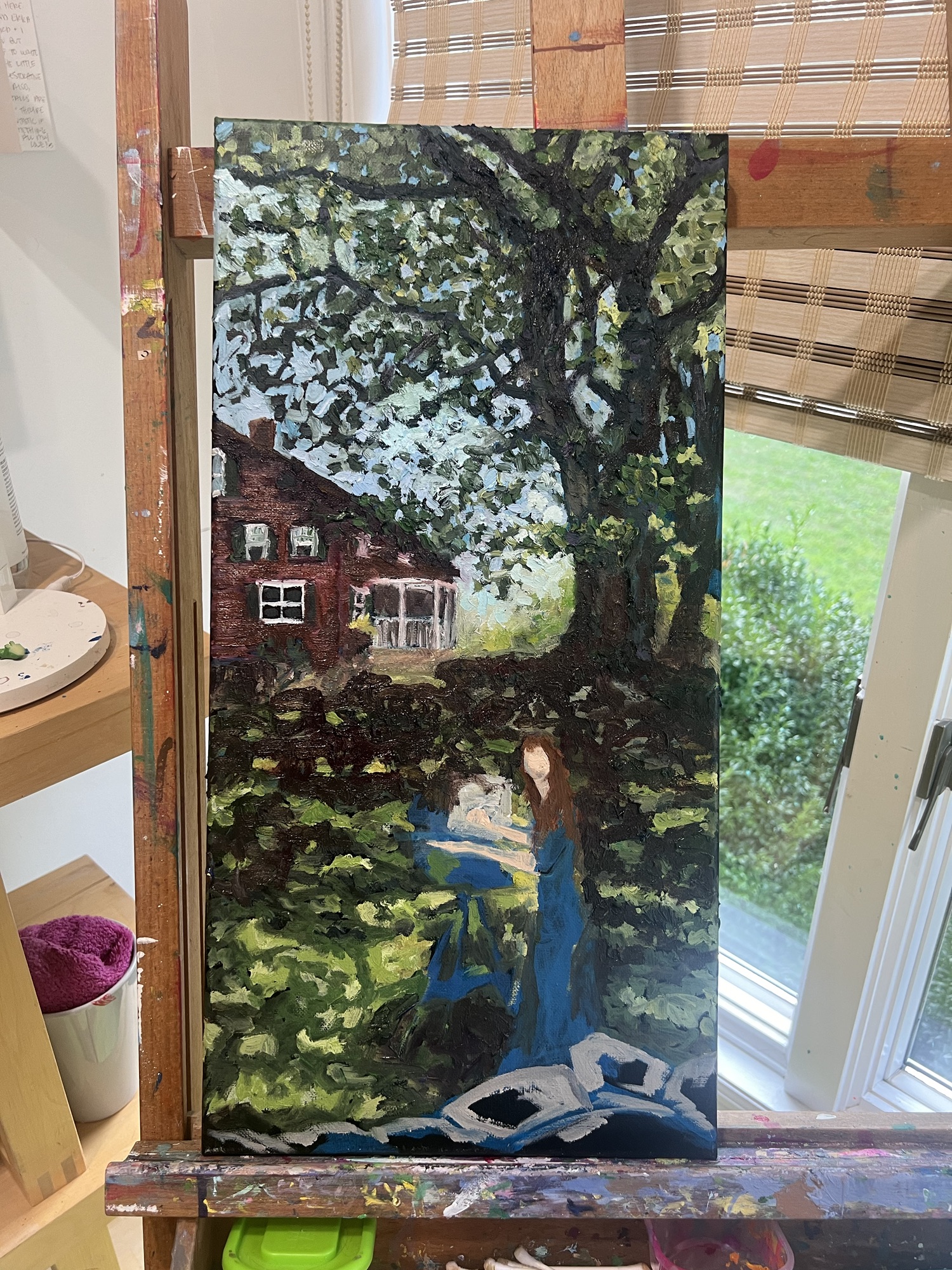
When I went to start my commission, I committed a whole week of studying the reference photos. I sketched the inspiration in a couple of different ways, and on the first day of week two I did a quick mini painting in three hours. I wanted to feel Uber confident with the subject matter, the composition, and the enhanced color scheme I was proposing, so I belted it out in a tiny version. I gained confidence and assessed possible changes.
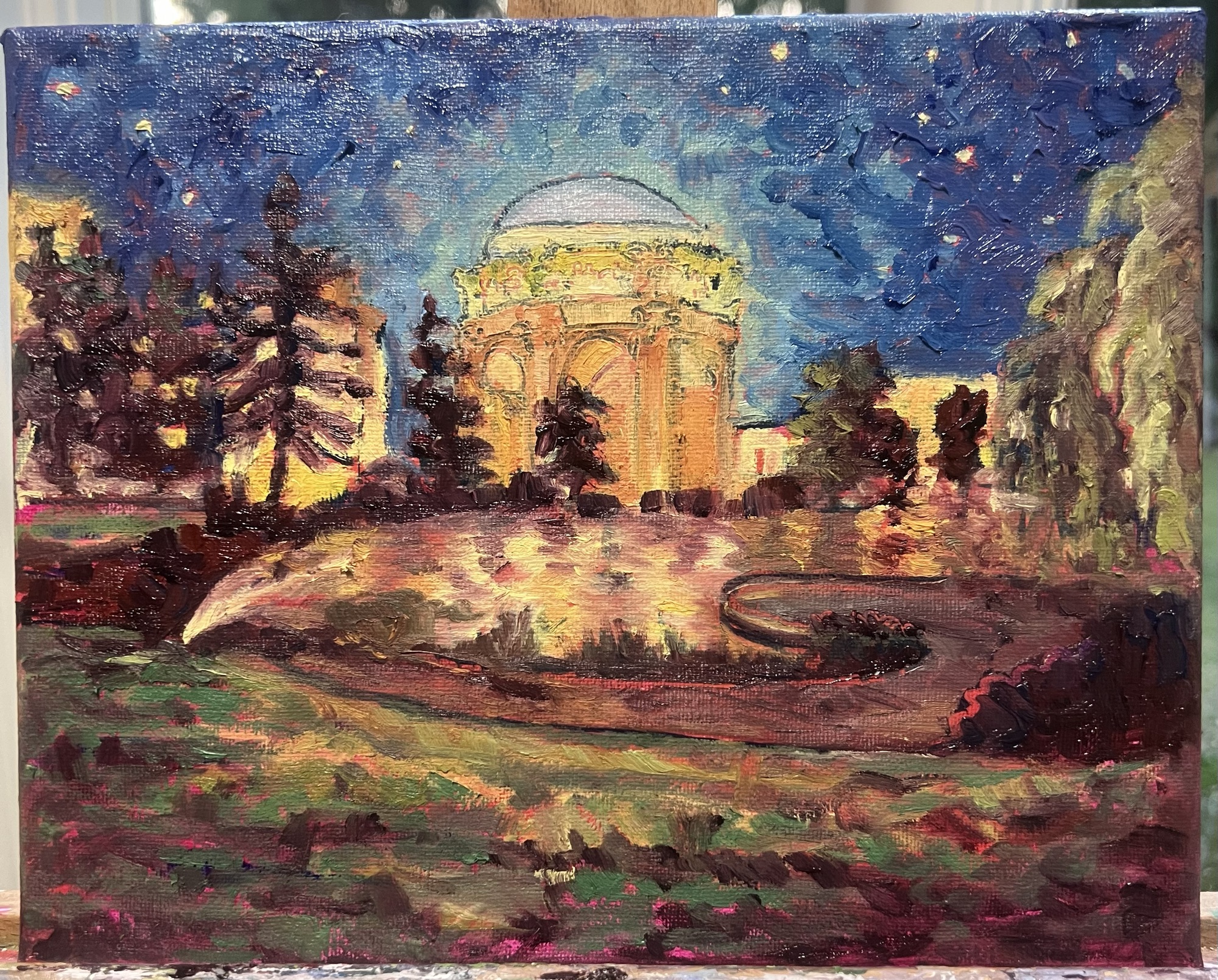
Acrylic Paintings
My most recent unfinished acrylic painting was intended to be a hurried, small piece after the grief that On the Lookout gave me. Yet, I used several reference photos to combine for one composition, used a medium I’m less confident with, the references had architecture, people, familiar landmarks…painting small has its own challenges—honestly the composition was an artist’s nightmare.
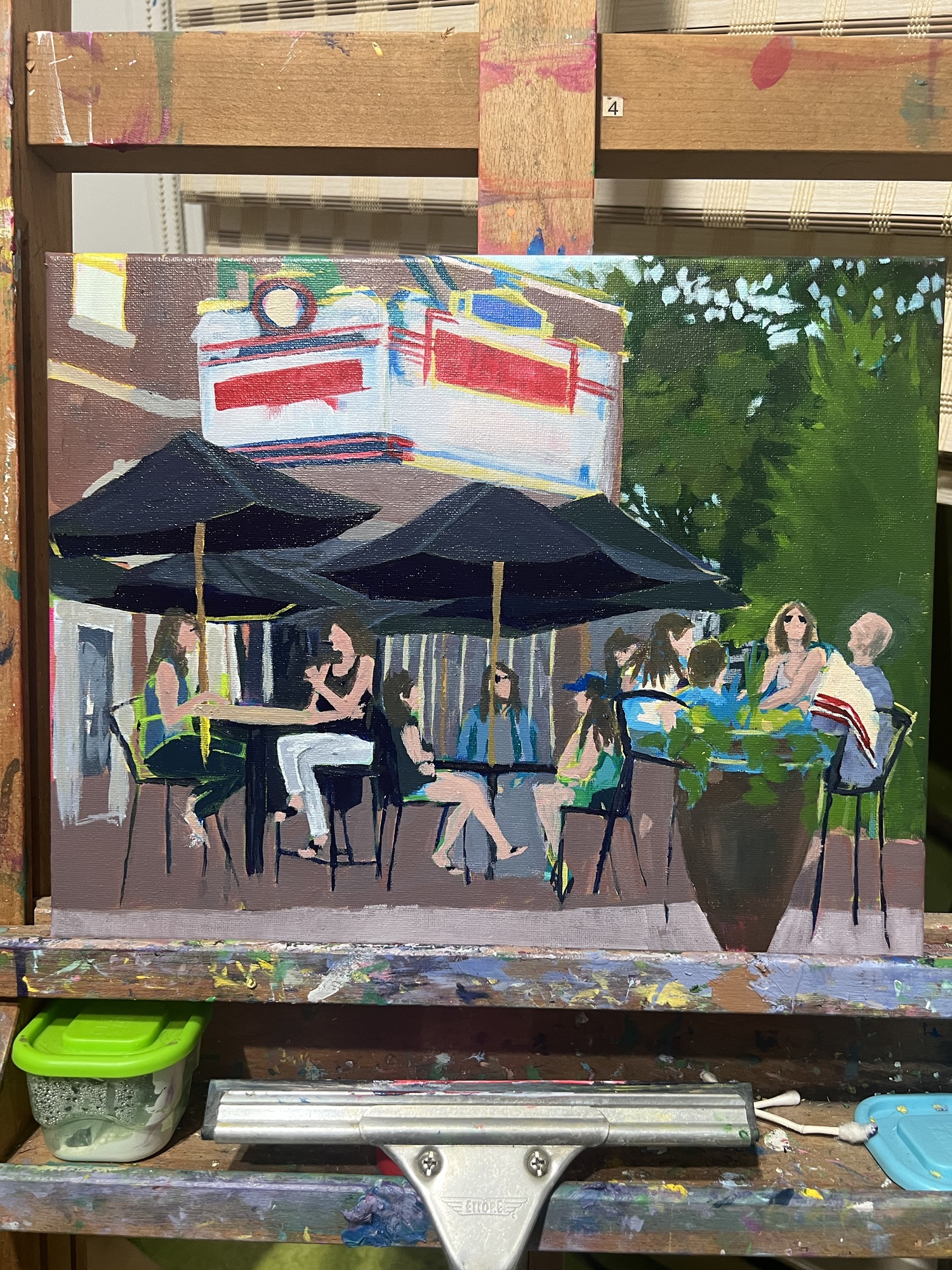
Acrylic doesn’t have the same textures of oils, so I could keep painting over and over, in layers. This is good, except when I didn’t start methodically to begin with. I kept painting the same edges again and again without direction.
I referred to a class I purchased in the past from Not Sorry Art School, and discovered where I went wrong. I didn’t do enough studies—I did none! Not a single drawing before I painted. That may work for some more seasoned artists, but not me.
Last week, I took one day off from my commissions to join an en plein air pair out with my Weir Farm Artist Collective pals. I’m going on a painting retreat soon and wanted to gain some confidence with my en plein air set up and acrylics.
With this painting, I sketched a thumbnail. I painted outlines fully—no questioned unanswered. I filled in the big spaces, dark to light. I didn’t finish. Maybe the finished project won’t be a masterpiece, either. But not all paintings need to be masterpieces. Studies are crucial, too.
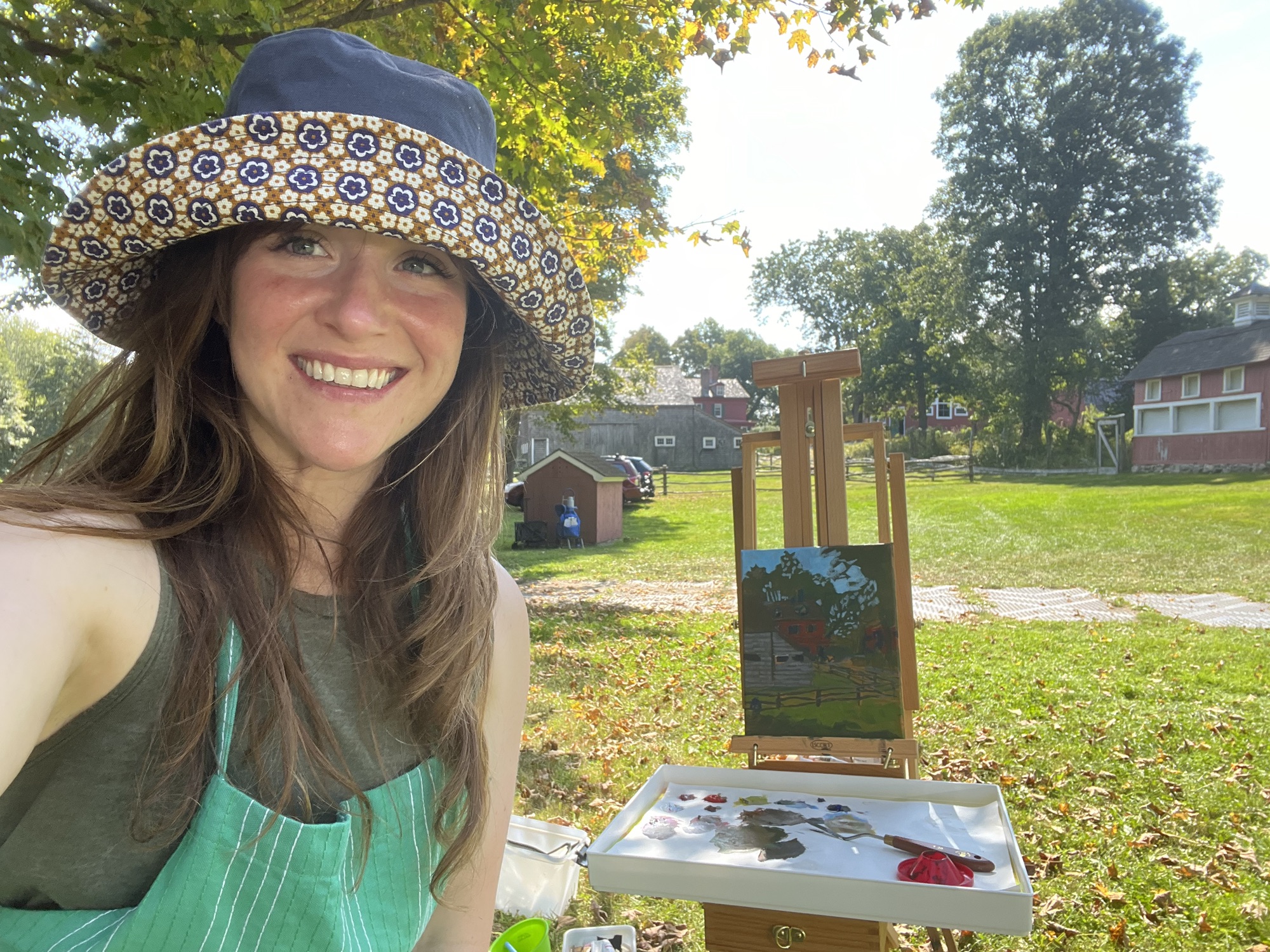
Planning to Blog
I was on a blogging streak in the spring—a record sixteen posts in the month of April! Granted, I wasn’t painting. Maybe I paint/write feverishly on a seasonal basis. Or maybe I could plan better. I don’t see the prompts until late, I don’t begin writing until my youngest is in bed and I don’t have time to finish my thought before I’m too sleepy to continue, and the day’s prompt feels…expired. I could write like a journalist—stealing away a few minutes at a time throughout the day, which add up. Looking back, that is precisely how I wrote as much as I did in the spring.
Planning my Day
I believe in time blocking, and I use a Panda Planner for this on my best days. Even if I don’t prep my hour blocks with this prior to beginning my day, I still find it useful to fill in afterward.
The weekly view planner works best for me. I overshoot what I can accomplish in a day, so the weekly view allows me to broaden my sense of time in one glance.
Yet, I’ve been using a daily view that my teen left unused for the last 6 months. The pages are undated, so though it’s a 3 month, I used it less and it’s taking me some time to complete it. My new planner is on my desk and I’ll begin using it come October!
Planning other projects
Remember the creative project binder? Here’s the thing: I’m a do-er. I like to get things done. I like to get started. Boy, do I like to get started. But projects come with obstacles-time, tools, materials, skills, help. And often when those obstacles arise, I have another project I’ve been meanin’ to get to that I can make some progress on anyhow.
That’s cool and all—one of these days maybe they’ll all be done at once and the way I envision my life will finally come into fruition and my backyard and basement won’t look like junkyards.
Or maybe, like those paintings, I could give myself the opportunity to solve the problems with graphite and loose leaf, first. Before ripping up the grass, or dragging a tool out, or ripping the moulding off the wall, I could map out a plan, know the tools, materials, skills, and assistance I’ll need before heading over to the hardware store. I’ll have all the big problems solved ahead of time, and the confidence to keep going as little ones come up.
That’s what I should do more of.
But getting started is so darn fun.
[…] Monday I wrapped up the finishing touches on 1/2 of my commissioned paintings. That same day I got started on the second piece. I haven’t gotten the chance to share the […]